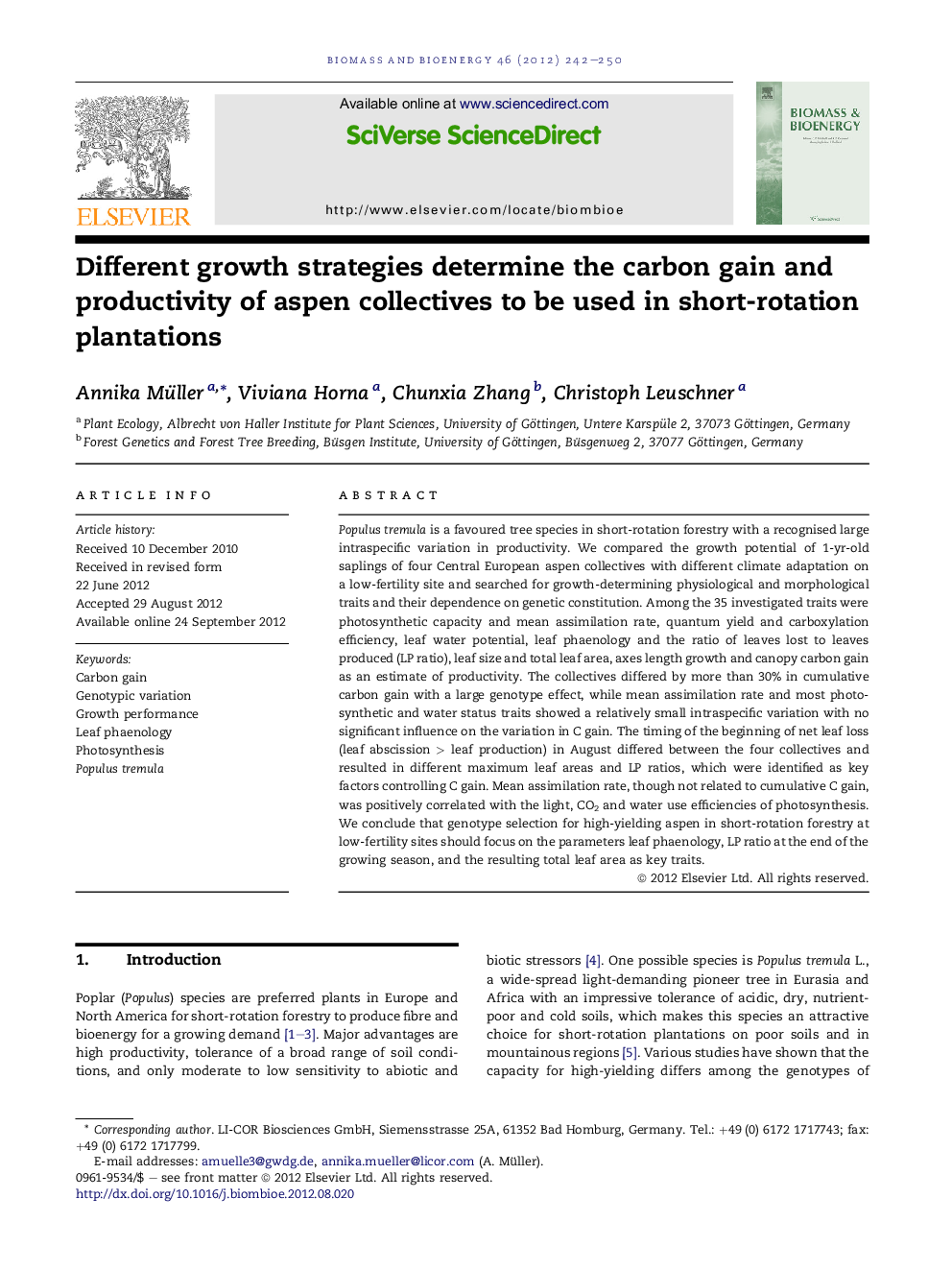| Article ID | Journal | Published Year | Pages | File Type |
|---|---|---|---|---|
| 677158 | Biomass and Bioenergy | 2012 | 9 Pages |
Populus tremula is a favoured tree species in short-rotation forestry with a recognised large intraspecific variation in productivity. We compared the growth potential of 1-yr-old saplings of four Central European aspen collectives with different climate adaptation on a low-fertility site and searched for growth-determining physiological and morphological traits and their dependence on genetic constitution. Among the 35 investigated traits were photosynthetic capacity and mean assimilation rate, quantum yield and carboxylation efficiency, leaf water potential, leaf phaenology and the ratio of leaves lost to leaves produced (LP ratio), leaf size and total leaf area, axes length growth and canopy carbon gain as an estimate of productivity. The collectives differed by more than 30% in cumulative carbon gain with a large genotype effect, while mean assimilation rate and most photosynthetic and water status traits showed a relatively small intraspecific variation with no significant influence on the variation in C gain. The timing of the beginning of net leaf loss (leaf abscission > leaf production) in August differed between the four collectives and resulted in different maximum leaf areas and LP ratios, which were identified as key factors controlling C gain. Mean assimilation rate, though not related to cumulative C gain, was positively correlated with the light, CO2 and water use efficiencies of photosynthesis. We conclude that genotype selection for high-yielding aspen in short-rotation forestry at low-fertility sites should focus on the parameters leaf phaenology, LP ratio at the end of the growing season, and the resulting total leaf area as key traits.
